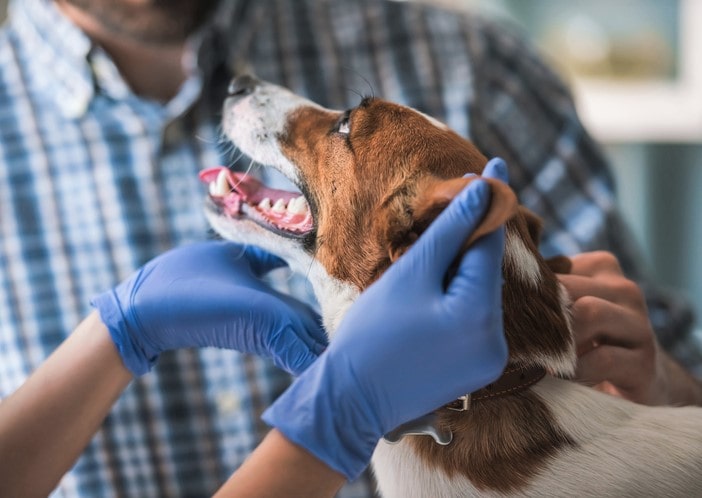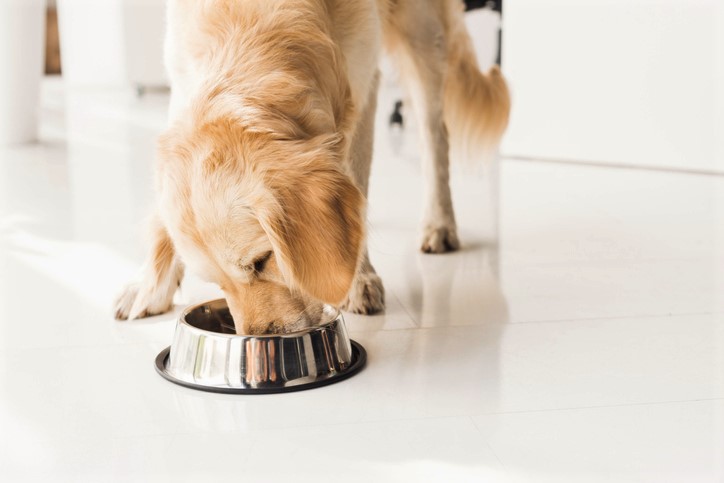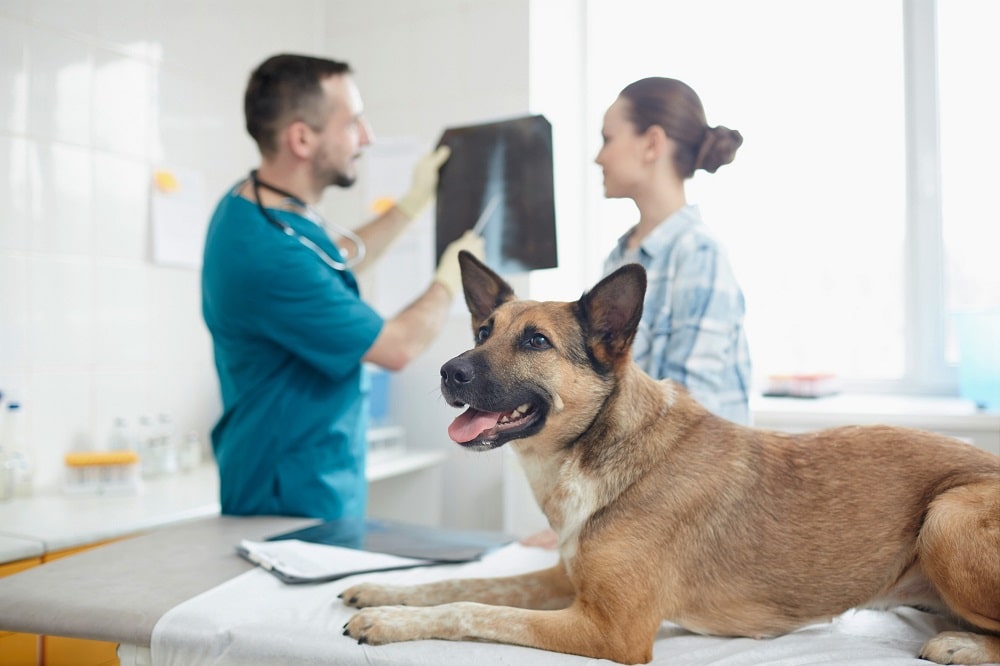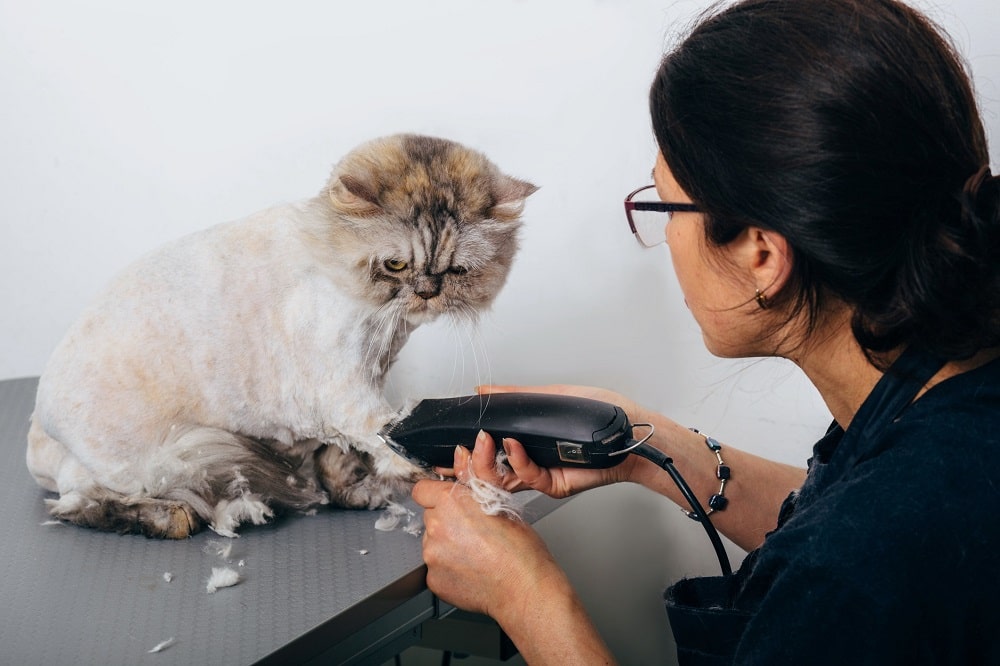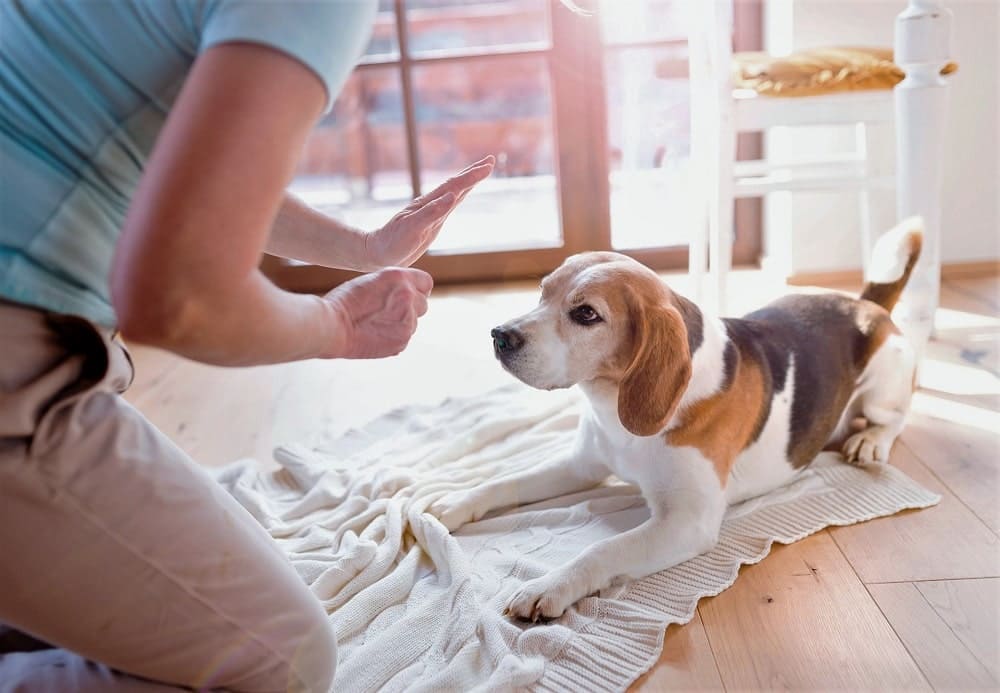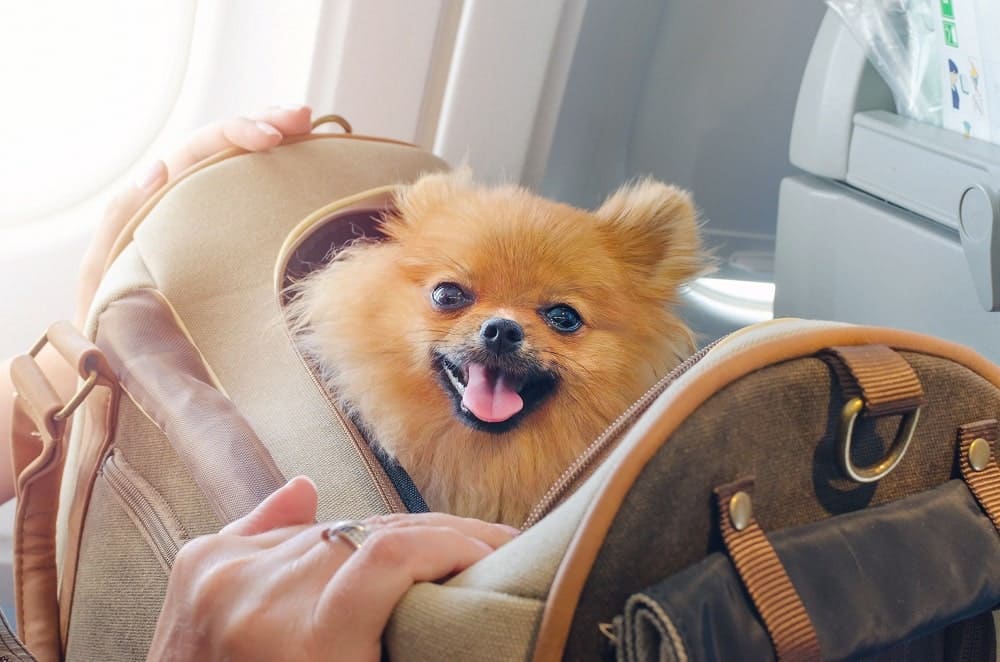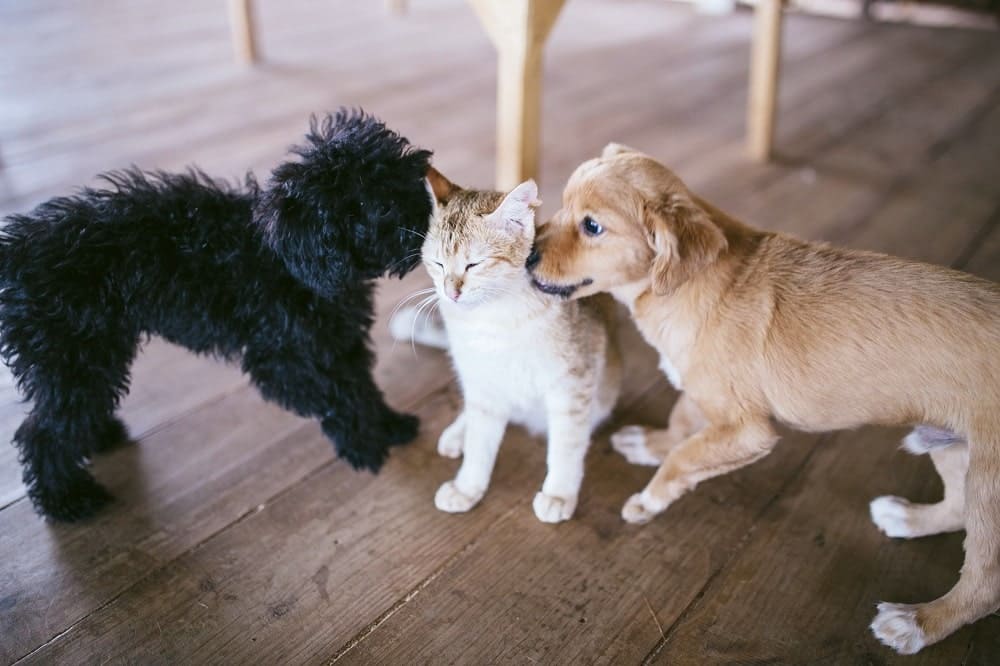An important decision new pet owners must make is whether to spay or neuter their cat or dog. Many veterinarians consider these procedures as a critical facet of a pet’s overall health and wellness, but it’s important to have a full understanding of what is involved before scheduling the surgery.
Continue reading to learn what spaying and neutering are, how much they cost, and how pet insurance can relieve you of some of the expenses associated with the surgery.
What does spaying and neutering entail?
Spaying and neutering are permanent, irreversible surgical procedures that remove an animal’s reproductive organs, effectively sterilizing your pet. Spaying refers to the procedure used for female cats and dogs, while neutering is the term used for males.
When you should spay or neuter your cat or dog is important for the animal’s safety. Your veterinarian will take the type, breed, and overall health of your pet into account to recommend the best timing and course of treatment. Cats may be spayed or neutered as young as eight weeks and up to five months old, while most dogs will undergo the surgery between six and nine months old.
Should I have my pet spayed or neutered?
Choosing whether to spay or neuter your pet is a personal decision. Most pet owners decide this treatment for their cat or dog to prevent unexpected litters that can contribute to overpopulation.
Spaying and neutering both also help to curb certain behaviors in your pet, including aggression and spraying in dogs, and cats yowling or urinating outside of their litter box. Finally, the surgery can reduce the risk for a range of medical conditions, such as uterine infections in females and testicular cancer in males.
How much does it cost to spay or neuter a dog or cat?
The costs associated with spaying and neutering pets can widely differ depending on where you live; the type, breed, size, and age of your pet; whether anesthesia will be used in the procedure; and your vet’s specific policy. On average, you’ll spend between $50 and $300 for the surgery. Blood work or post-op pain medication can incur additional charges as well.
If you’re looking to save on spaying or neutering, low-cost services may be available through your local Humane Society, SPCA, or animal shelter. If you’re new to your veterinary office, they may also offer discounts or specials.
Does pet insurance cover spaying and neutering?
A basic accident and illness pet insurance policy may or may not cover spaying and neutering, and pet owners with major medical or accident-only plans will not be covered for these procedures, as they are generally considered elective.
However, many pet insurance carriers provide add-on options available to help pet owners cover the costs of spaying or neutering surgery. These are offered as wellness rewards — purchased on top of the main policy — that cover both routine and preventative care including spaying and neutering or reimburse the pet owner following the procedure.
How much of the surgery will be covered is contingent upon the insurer and its coverage or reimbursement limits. You can browse available policy and coverage options for your cat or dog here.
PET BLOG
Are you thinking about enrolling in a pet insurance plan to help cover the cost of veterinary treatment for your fur baby? Wise move! But what does pet insurance cover, exactly? Well, that all depends on the type of policy that you sign up for. It’s a lot like shopping for health insurance for humans, as different plans will provide different levels of coverage for different types of care.
It might seem like a lot at first, but don’t worry, it’s not all that complicated after all. Below is a basic breakdown of what to look for as you shop for the right pet insurance for your needs and budget.
Pet Insurance Coverage: What to Expect
You shouldn’t anticipate that a pet insurance policy will automatically cover every form of veterinary care that your furbaby will require. Instead, it’s wise to read through the fine print while comparing various plans and providers so you can find the one that will be just right for you and your companion.
Generally, pet insurance plans will start by covering most illnesses and accidents. The coverage will be there for those unexpected vet visits that can cost a lot of money.
When it comes to pre-existing conditions, they might be excluded altogether, or there might be restrictions in terms of what’s covered. For example, some plans will cover only those conditions that are curable, while other plans might not cover pre-existing conditions at all.
Chronic conditions, such as arthritis, asthma, diabetes, and cancer, are usually covered. Just be sure to read the fine print to see if there are any restrictions.
The costs of rehabilitation might be covered by pet insurance, but there may be restrictions on the amount of coverage that’s provided for this type of treatment. Purchasing a policy rider might be necessary to get what you need.
Routine care and wellness visits might only be covered if you purchase an add-on, such as a wellness rider. Usually, plans will not offer coverage for this category of care, which would include things like checkups, spaying/neutering, vaccinations, etc. So, if this type of coverage is important to you, go with an insurer that offers it as an option.
Alternative therapies, such as chiropractic care and acupuncture sessions, might be covered as long as they are done by a licensed vet. However, some insurers might require that you purchase an add-on to your standard policy if you want this type of coverage.
Office visit and exam fees are those that your veterinarian charges just to see your pet. These might not be covered by insurance, so again, if you want this coverage, be sure to read the fine print. For example, you might notice that a plan with a payout limit covers these types of fees, while plans without payout limits won’t, or a plan might only cover exam fees for non-routine visits.
If your vet needs to order diagnostic tests, such as X-rays, blood tests, and scans, they’ll likely be covered by insurance, but there might be restrictions if those tests are ordered as part of a wellness or preventive checkup.
When your pet needs a prescription medication, insurance might help cover the cost. However, when it comes to medications, such as flea and tick treatments, that are available over-the-counter, you’ll probably have to pay for those on your own.
What Does Pet Insurance Not Cover?
Again, every pet insurance provider is different. Generally, however, there will be exclusions, and they might include things like the following:
Dental disease
Behavior problems
Hip dysplasia
Hereditary or breed-specific conditions
Grooming
Bilateral conditions
Cosmetic and elective procedures, unless they’re medically necessary
Remember, there are exceptions, with some pet insurance providers offering more than others. So, for example, you might be able to find a plan in your area that covers conditions like hip dysplasia even though other providers will not. It’s so important to do your research!
Interested in Shopping for Pet Insurance?
If you think that pet insurance is just what you and your furry friend need, you’re probably wondering if there’s an easy way to find the appropriate policy for your budget. Yes, there is! By checking out a resource like the Direct Benefits Marketplace, you can browse options and see if they match your expectations.
Remember, pet insurance costs are based on various factors, such as your pet’s species, breed, age, and gender, as well as where you’re located. Once you’re able to compare various plans to one another, you can determine which one will give you the best value for your money, and you won’t have to worry so much about covering the cost of important veterinary care.
Pet insurance covers quite a bit, which is why it’s growing in popularity among owners of cats, dogs, and exotics. Whether you want a little bit of coverage or a lot, there’s a plan to suit your needs and give you peace of mind.
Sources:
https://www.valuepenguin.com/pet-insurance/what-is-pet-insurance
https://www.gopetplan.com/blogpost/what-does-pet-insurance-cover
https://www.policygenius.com/pet-insurance/learn/what-doesnt-pet-insurance-cover/
https://365petinsurance.com/faq/does-pet-insurance-cover-hip-dysplasia/
Your new best friend is getting settled into their new home. You’re playing and bonding, and they’re healthy and happy.
It’s now time to take them for their first veterinarian visit for a routine check-up! This visit is critical to your young pet’s well being, but it might be a bit overwhelming for a new pet owner or a new pet. Here are some of our tips for a smooth first vet visit.{...}
When to take your pet to their first vet visit
Whether your pup came from a shelter or a breeder, puppies should be brought to the vet within their first few days after coming home. The same rule applies to kittens – It’s a great way to get a baseline of your animal’s health and start their life in your care on the right foot (or paw).Once you've decided it's time for a trip to the vet, do some research and find the right vet for you and your animal.
How to prepare for first vet visit
Gather materials
You’ll want to bring along any paperwork the breeder or kennel gave you. The vet may ask for the information on your pet’s medical history, which is typically included in these files! Pro tip: Make a special folder for all your new pet’s documents. This makes it easy to bring along to appointments and training classes or have on-hand for pet-sitters in the case of an emergency.
Have treats on hand
Bring along some treats! Have the vet give the treat to your pet – it’s a great way to start developing trust between your pet and their doctor.
Socialize your pet
Having a well-behaved pet can be the key to a great appointment. Start with socializing your pet and getting them used to being touched and held gently by a variety of different people, so they can accept their vet’s positive touches throughout your pet’s first vet appointment.
Ask the vet clinic some questions
If it’s your first trip to the vet, too, it’s important to ask if you have any questions prior to the appointment. Some first veterinarian visits will include a fecal exam, and your vet clinic might ask you to bring a sample of your animal’s stool.
What to expect at the first vet appointment
Every veterinary office is different, but generally, you can expect the same thing from your first trip to the vet:
• The vet will start to get to know you and your new animal, ask where you got your pet, whether it’s been de-wormed or had any vaccinations, etc. They will probably ask some lifestyle questions to learn more about your pet’s specific needs, too!
• When arriving, keep your puppy or kitten kenneled or on a leash and close to you. There will likely be other animals around and you’ll want to keep them as calm as possible.
• The vet will thoroughly examine your puppy or kitten. This will likely include weighing your pet and examining their ears, coat, eyes, heart, teeth, and gums.
• The first trip usually involves vaccinations, but it’s up to you as a pet parent which vaccinations and boosters your pet will get.
What will the first trip to the vet cost?
Prices will vary based on exams and procedures performed, but they will also vary from clinic to clinic. You might want to call clinics in your neighborhood to compare prices before you go. Additionally, you may want to consider investing in pet health insurance to cover pricey vet bills.
Questions to ask at the first vet visit
“What kind of vaccinations does my pet need?”
You will probably have to return for more vaccinations, but it is good to know what your vet recommends and how many your new puppy or kitty might need in the future so you can plan for costs and upcoming appointments.
“What preventive measures should I be taking?”
Heartworm, fleas, and ticks can all be prevented with special medications or vaccinations. Ask your vet what they recommend based on your animal’s size and lifestyle.
“How much food should I be feeding my pet?”
This question might be accompanied by another great question, “is my animal’s weight normal?”. Your vet will be able to recommend a serving size and even specific types of food based on your animal’s breed, age, and lifestyle, resulting in a happier, healthier pet!
“Is _____ normal?” “Should I be doing _____?”
And any other curiosities you might have! No question is a dumb question when it comes to your pet’s well-being. Now is the time to ask any question you have about how to care for your new family member – So, don’t be shy! Ask away!
Sources:
https://www.akc.org/expert-advice/health/puppys-first-vet-visit/
https://www.veterinarypracticenews.com/how-many-vet-visits-does-a-puppy-need/
As dogs enter their senior years, their dietary needs may change. This is completely normal and, luckily, there’s an easy change you can make to ensure your senior dog has what they need nutritionally.
An older dog’s diet doesn’t really require more effort – just a change in food! Here are some reasons dogs need senior dog food and signs that your best friend might benefit from a change in diet.{...}
Why do older dogs need senior dog food?
The dietary needs of animals change over time due to age, activity level and overall health. For example, puppies require a diet different than adult (also called second-life-stage) dogs, and adult dogs require a diet different than a senior (or third-life-stage) dogs.
Our senior pets undergo metabolic, immunologic and body composition changes. These changes may be unavoidable, but you can help your dog by switching them to a senior diet.
What does that mean? It means when dogs reach their senior years, they may need food with more protein and fiber, and less fat; with glucosamine and/or fatty acids such as DHA and EPA.
You can also find issues that address your pet’s specific health needs! You can purchase dog foods that are made specifically for dogs with diabetes, tooth decay or loss, or other health problems that your dog may face in their senior years. At your next visit to the vet, ask your vet about how you can supplement your dog’s current health regimen with special foods. It’s also smart to do some research of your own—there are so many different types of dog food for older dogs on the market, and it’s good to know what you’re looking for.
Signs that your furry friend needs senior dog food
1. Your dog is showing visible signs of aging
The term “senior” can describe a pet that is aging, but there is no exact age range that defines a dog’s life stage. If your dog is between 5-10 years of age and you start noticing changes in weight, changes in sleeping pattern, drinking patterns, and deterioration of their overall body composition, you might have a dog that is considered “senior”.
2. Your dog is experiencing weight changes
Some older dogs might become obsessed with food and begin gaining weight, while others have the opposite issue and become fussy eaters over time. If you don’t already, keep an eye on your dog’s eating habits and body weight.
Another thing to watch (or smell!) for? A gassy dog. Senior pets might develop digestive issues such as flatulence of upset stomachs. These dogs might be a good candidate for a senior formula to meet their needs and address any dietary challenges.
3. Your dog’s behavior has changed
You might notice your dog’s behavior is a little “off”—they’re sleeping more and have less energy, or they’re unwilling to do activities they used to enjoy—they might be entering their senior years. Give them longer periods of interrupted rest and consider talking to your veterinarian about switching to senior pet food.
Switching your dog from an adult diet to a senior diet might deter expensive vet bills, but most importantly, it will make for a comfortable older dog that is getting the nutrients they need to age gracefully.
Sources:
https://www.petmd.com/dog/care/evr_dg_defining_senior_age_in_dogs
https://www.avma.org/resources/pet-owners/petcare/senior-pet-care-faq
https://pets.webmd.com/dogs/guide/senior-dog-food#1
https://www.akc.org/expert-advice/nutrition/nutrition-and-supplements-for-senior-dogs/
We love our feline friends, but we know that they don’t always love our other pets right away. Introducing a new cat to your existing pets is tricky, but it can be made trickier by the unpredictability of cats!
Whether you’re bringing home a new kitten, a rescue cat, or combining homes with pets, we’re here to help make sure the introduction of a new pet into your household goes smoothly!{...}
Before we get started, it’s important to remember that new pets require patience. Introducing new pets to existing pets—and more importantly, getting them to play nicely—can take time. Practice patience whenever working with your animals and be sure to get advice from a professional (veterinarians, licensed dog trainers, etc.) whenever necessary.
Introducing a new cat to another cat:
1. Before bringing a new cat home, create a separate space for them
You will want to separate your new cat from your existing cat(s) right away so you can have control over their first meeting. Allow your new feline friend to get comfortable in your home with a space of their own.
This space should contain water, feeding dishes, and a litter box of their own. This is their little retreat for the next couple of days, and their first introduction to your home!
Make sure that the room has multiple “hiding spots”, just in case the cat gets frightened. Hiding places are important! They may need a place to retreat to when confronted by other cats or when easing into a new household.
2. Do “the switch”
You should allow the cats to enjoy their space for about 2-3 days.
Once the animals appear comfortable in their spaces, do “the switch”: move the existing cat(s) into the new cat’s space, and allow the new cat to roam the existing cat’s space.
Allow the cats to roam the “new” spaces and become familiar with the other cat’s scent. This acclimation process can take place over one day.
3. The Meeting
Let the cats get familiar by sensing each other through a closed door. You can allow them to paw at each other under the door if they’re being friendly.
After they seem comfortable with each other’s presence (this could take a few days or even a few weeks – use your best judgement), allow them to meet by opening the door.
It is always a good idea to have treats on-hand for the meeting. Reward the cats with treats throughout the meeting.
If there are any signs of stress, separate the cats again.
Introducing a new cat to a dog:
“Fighting like cats and dogs” is just a phrase – there are so many instances when cats and dogs get along and happily share a household.
1. Build them a dog-free zone
You will want to separate your new cat from your dog right away so you can have control over their first meeting, but this dog-free zone also serves as a retreat for your kitty cat in the event that the cat feels threatened or upset by your dog.
Ensure that this space contains their water bowl, food bowl, and a litter box of their own. Set up some “hiding spots” for your kitty to help them feel extra safe.
2. Keep them separate
Keep the animals separate for a few days. Allow your cat to get accustomed to their new home. This period away from each other allows the pets to get used to being in the same home together without making contact.
3. The pre-meeting meeting
Allow the animals to interact with each other on opposite sides of a door. You can feed them near the door to teach them to associate the other with “good” things.
They might be curious and paw at each other under the door. Allow them to do so if it seems pleasant.
4. Meet on neutral ground
Facilitate a short meeting in a common area of the house. Perhaps this is your living room. Keep your dog on a leash if necessary and allow the new cat to come and go as they please.
It is important that you stay calm and collected during the meeting. Try to relax and speak to the animals in a calm matter. It’s also a good idea to keep a few treats on hand for each animal and reward them for good behavior throughout the meeting periods. You can also have lots of toys around for them to entertain themselves.
Continue these brief, controlled meetings (again, on neutral ground) until the animals seem like they’re familiar and content with one another.
5. Allow them to mingle freely
Let the animals roam but be sure to keep an eye on them. Some people like to let their dog drag their leash throughout the home so you can easily stop them if they get too excited or show any aggression towards the new cat.
Once the introductions have been made, and your new feline friend is settling in, it’s time to think about pet health insurance to protect them. We’ve got you covered – run a free quote to see rates for your new cat today or call us to chat with one of our licensed agents if you have any questions about pet insurance.
Sources:
https://www.paws.org/resources/introducing-cat-to-cat/
https://www.animalhumanesociety.org/behavior/how-introduce-dog-and-cat
https://www.petmd.com/cat/training/evr_ct_how-to-introduce-a-dog-to-a-cat
Dogs are inherently pack animals--but that doesn’t mean your new puppy, foster dog or rescue dog will automatically take to everyone around them. Luckily, there are things you can do to help them adjust.
Now that you’re a pet owner and you’ve brought them into their new home, they need to become familiar with their surroundings and socialized to who and what is around them.
Socializing your dog is critical to having a pet that is happy, healthy, and friendly to other animals and people.{...}
Why socializing your dog is important:
Helping your puppy or dog acclimate to all kinds of sights, sounds, and smells in a loving and positive way can prevent them from being fearful of children, other dogs, or of riding in the car, for example.
This is important for the safety of your dog, yourself, and other humans that might want to interact with your dog in the future. But dog socialization is also important to the quality of life of your friend on four legs.
Putting it simply, when a dog is socialized properly, they can live a better life. If a dog is unafraid of the people and things they see daily, and is therefore able to tag along on walks, trips to breweries or parks or anywhere outside of the house, they lead a happier life. They are less likely to experience stress and anxiety in their daily life.
How to socialize your dog:
You should try to socialize your dog with humans as well as with other dogs. Follow our three tips to socialize your companion.
A note about age: It’s important to socialize a young puppy to shape their view of the world positively. It’s best to socialize your puppy in the first few months of their life at home.
While puppy socialization is important, a dog is never too old to be socialized—or “reintroduced” to sights, sounds, and smells. When re-socializing a dog that is no longer a puppy, supervise carefully and use positive praise (and treats!) to help them associate their surroundings with good things.
1. Introduce them slowly and carefully to a variety of settings
• Let them meet family and friends on a one-on-one basis, in a calm, quiet room.
• Introduce them to other household pets slowly and thoughtfully
• Take them on daily walks and observe their body language when meeting a new person or an unfamiliar dog. Let them sniff from a distance before getting close and keep them on a short leash just in case either animal gets too excited.
• Take them to a dog park--but don’t go in yet. Walk them around the outside edges so they can take in the smells, sights and sounds of other dogs at play.
• Bring them to a variety of places where they can see, hear, and smell different things. While they’re out with you, introduce them to as many people as possible! Let them pet your dog if they are comfortable. Try to get them comfortable around different types of people (young children, seniors, in wheelchairs, on bikes, in hats, etc.). Teach them how to greet people and then lie down with a toy. Great places to go include:
o Work (if possible)
o Outdoor cafes or coffee shops
o Pet food stores
o Hardware stores that allow dogs
o Beaches and parks that allow dogs
• Use treats to reinforce good behavior. If your dog is doing great–or feeling a bit unsure about a new experience–feel free to give them treats along the way to indicate a positive experience.
2. Enroll your puppy or dog in a training class
Introductory puppy and dog classes—whether they’re obedience classes or agility training—are great places to socialize your dog or puppy.
Your dog will learn new tricks and learn to pay attention to you while other dogs are present. It’s a win-win!
In these training classes, there are typically other dogs that your dog can socialize with. This is a great opportunity for your dog to get used to being around other dogs regularly and in a casual setting.
3. Handle your dog with loving care
Touch is an important part of dog socialization! You want your pup to get used to people handling them so they are comfortable in situations like going to the vet, trainer, chiropractor, or being in the care of a dog sitter or dog walker.
It’s important for your animal to get used to your (and others!) kind and gentle touch. Pet their ears and cradle them in your arms regularly. Be sure to carefully touch their mouth, teeth, and paws whenever you get the chance.
Socializing a puppy or dog be a difficult process, but it is always worth the work! When socializing your new best friend, exercise caution. Every dog is unique, and it is important to watch carefully and alter your socialization process as necessary. If additional help is needed, be sure to consult your veterinarian or a professional dog trainer.
So, stock up on treats and get ready to get social with your pup. Practice makes perfect!
And once the introductions have been made, and your new dog is settling in, it’s time to think about pet health insurance. To get a pet insurance quote and see our what our plans offer, from vaccinations, to emergency visits to routine care, visit directbenefits.com/pet-insurance.
Sources:
https://www.animalhumanesociety.org/behavior/socializing-your-dog
https://www.akc.org/expert-advice/training/puppy-socialization/
If you have a pet, or are considering adopting one, then you need to have a veterinarian. Finding a vet with the right expertise, and the calm and caring approach your pet needs, can be challenging. We’re ready to help you find the best vet for your furry or feathered friend.
Start by asking friends and family members about the vet they use and why they like them. Do an Internet search and study the websites for veterinary clinics nearby. Then use our list of questions to help you narrow down your choices in finding a veterinarian you like.
Where is the practice located?
Will it be easy for me to get there?
Is it open at times that are convenient for me?
How soon are appointments available?
What are the fees for the various services?
Does the office accept my pet insurance plan?
Does the practice handle routine surgery such as spaying and neutering?
How many years of experience does the vet have?
Is there an emergency facility in my area if clinic services are unavailable?
Be sure you’re covered with the right pet insurance plan, too. If you haven’t gotten a plan yet, we can help you! We’ve done the research and are available to chat online or on the phone. With our experience and background, we can find the right coverage for you - call us at 888-890-1944 or e-mail us at info@directbenefits.com.
Of note: The information provided here is not meant to be a substitute for professional veterinary advice. Always check with a veterinarian you trust before making any major healthcare decisions for your pet family.
We take our pets to the groomer for any number of reasons: To keep their coats shiny and healthy; to remove dirt and debris; to shave or trim fur in hot weather; to acquire a special look; to get nails trimmed, and more. So how do you find the right groomer for your pet’s needs?
We can help!
We’ve put together a list of some things to consider when looking for a groomer.
Is the groomer conveniently located?
What hours and days is it open? Do those hours fit with my schedule?
How much are the services? Do the fees fit into my family budget?
Can I leave my pet for the day?
Am I required to leave my pet for the day?
What special services are available? For example, what is the cost for detangling matted hair, burrs in fur, etc.?
What do you do to calm pets down? (Some groomers might sedate pets with drugs before grooming.)
Does the facility feel safe and inviting?
Are dogs and cats kenneled separately in the facility?
Do the other animals and owners seem to be relaxed and happy with the services?
If you’re thinking of pet care, you may be thinking of insurance as well. Don’t worry - we have your back. We’ve done the research and we’re here to help.
If you haven’t gotten a pet insurance plan - we can help! We’ve done the research and we’re online and on the phone ready to talk with you about any questions you might have about choosing the right coverage. To chat with one of our team members, call us at 888-890-1944 or e-mail us at info@directbenefits.com.
Of note: The information provided here is not meant to be a substitute for professional veterinary advice. Always check with a veterinarian you trust before making any major healthcare decisions for your pet family.
We know your pet isn’t just a companion; she or he is an integral and important part of your family. So when it comes to training, in particular a new dog or puppy, we’re here to help you find the right trainer and training program.
Choosing the right training program or trainer for your young pet can make a world of difference. That’s why you’ll need to be sure to choose the best possible trainer and facility{...}. To help, we’ve put together these some simple steps to help you and your family.
STEP 1:
Before you pick a trainer, ask yourself:
What type of training does my pet need? All puppies benefit from obedience training. But depending on breed, and energy level, you may want to enroll you pet in agility, protection, tracking, hunting, search and rescue, therapy, hunting, herding, or flyball training, as well.
How involved do I want to be in the training process? Options include individual (one-on-one) sessions and group classes, as well as obedience schools where you send your pet to get trained.
What is my budget? According to Angie’s List, the cost of dog training can vary widely, depending on if the trainer charges by the hour or has a package of multiple sessions.
STEP 2:
Ask around. Talk to your vet about reputable trainers. Ask family members, friends, neighbors and co-workers where they trained their pets. Breeders, animal clubs or local animal shelters may also have recommendations.
STEP 3:
Once you have several recommendations, do your research. Search online, or by phone, to find out where the trainer or facility is located, when sessions are offered, types of training offered, fees, policies for cancellation, and any other questions you might have.
STEP 4:
Narrow your choices. Meet with the trainers. Better yet, visit their classes. Take notes during the class to help you remember your impressions.
STEP 5:
Evaluate your experience. At each class you attended, was the trainer helpful, courteous and knowledgeable? If you talked with the trainer, did they listen to your questions and answer them clearly? Did the trainer take the time to explain his/her methods?
BENEFIT BONUS
Trust yourself. Follow your reactions when deciding whether this trainer is the right one for your pet. If you aren’t comfortable with the trainer or their methods, find another instructor.
Get covered. Be sure you’ve got the best pet insurance plan possible. If you haven’t gotten your pet plan yet, no problem. We are happy to help with any questions you’ve got. We’ve done the research and are here to help! To chat with one of our team members, you can call us at (888) 890-1944 or e-mail us at info@directbenefits.com.
Training is critical to your dog’s psychological health and positive interaction skills. It also helps integrate your family with your pet and establishes boundaries; all of which contribute to your pet’s well being - and to the health and happiness of your family.
Of note: The information provided here is not meant to be a substitute for professional veterinary advice. Always check with a veterinarian you trust before making any major healthcare decisions for your pet family.
More and more individuals and families are traveling with their fur babies and animal companions. If you’re like many pet owners, your pet is an important part of the family. So no matter if you’re traveling by car, airplane, train or RV, Fido and Fluffy are - of course! - coming along too!
We’re here to help. If you’re planning a trip and your pet is coming along, start with a call or visit your vet. Tell your vet where you’re going, how you’ll be traveling, and for how long. You’ll also want to put your mind at ease and get answers to these questions so you have no surprises while traveling.
Are your pet’s vaccinations current? If you’re traveling out of country, many countries require a health certificate showing that the animal has up-to-date vaccines.
What diseases or illnesses might your pet encounter at your destination? Forewarned is forearmed. Protect your pet and your vacation by making sure your furry family member has all the necessary vaccinations.
Will my pet’s current medical conditions pose a problem while traveling? Travel is exciting--and it can also be stressful for some people and animals. Does you pet have any health issues that may worsen during travel? Or by being in a particular environment? Talk with your vet to clear up any questions or concerns you might have.
Care and feeding. Some animals need a certain diet or even medications to help them be as calm and healthy as possible before, during, and after travel. Discuss with your vet how to keep your pet as calm and as happy during travel.
Are your pet’s ID tags and microchip information up to date? All of your pet’s information needs to be up to date, with contact details and vaccination information included. If the unthinkable happens--your pet gets lost--you can be reunited with greater ease.
Don’t forget toys, blankets, and other familiar objects. Bring along a couple of your pet’s everyday items; your pet’s comfort will make the trip more fun for everyone.
If you don’t have pet insurance yet, not to worry! We’ve done the research and are here to help with any questions you may have about choosing the right coverage for your furry family member. To chat with one of our team members, you can call us at 888-890-1944 or e-mail us at info@directbenefits.com.
Of note: The information provided here is not meant to be a substitute for professional veterinary advice. Always check with a veterinarian you trust before making any major healthcare decisions for your pet family.
We’ve all heard about go-kits and bug-out bags: The ready-to-grab backpack or duffel with everything needed - clothing, food, water, medications, IDs - things you or your family need to leave home in a hurry during an emergency or natural disaster.
What about the family pet?
They need a go-bag, too! We’re here to help. Here’s a list to help you get started creating your pet’s emergency kit. Let’s get packing!{...}
Create a go-kit (using a bin or bag) and place it next to your pet’s crate, kennel or carrier.
Don’t forget food and water
3-7 days’ worth of your pet’s regular canned or dry food
Bottled water, at least 7 days’ worth for each pet
Can opener
Water and food dishes
Consider bringing …
Blanket (for comfort or covering cages)
Disposable garbage bags for waste clean-up, scooping poop
Disposable litter trays (aluminum roasting pans are perfect)
Extra collar, harness and leash (make sure they fit properly)
Flashlight
Grooming/hygiene items
Liquid dish soap and disinfectant
Paper towels
Towel
Toys
Your pet has important documents, too!
Either a photo or photocopies of medical and vaccination records
Prescriptions and instructions for medications
Pet insurance cards and policies
ID tags, microchips and licenses
Recent photos (in case you are separated and need to make “Lost” posters)
A written description including name, age, weight, fur and eye color, and other identifying details
A list of phone numbers, including for your veterinarian, pet sitter, closest emergency pet hospital, pet insurance agent
A few more tips
Rotate food, water, and medications every two months or so. That way, all items stay fresh and you are prepared with the most up-to-date supplies.
Make sure that all family members know the location of the kit, in case of an emergency. That way, everyone is prepared.
Now that you’re pet is prepared, is it covered with the right pet insurance plan? If not, we can help you online or talk you through any questions about choosing the right coverage. We’ve done the research and are here to help. To chat with one of our teammates, call at 888-890-1944 or email us at info@directbenefits.com.
Of note: The information provided here is not meant to be a substitute for professional veterinary advice. Always check with a veterinarian you trust before making any major decisions for your pet.
Are you ready to adopt a furry or feathered friend? We’re here to help. Choosing to bring a pet into your family isn’t a decision to be taken lightly. Along with becoming a loving addition, pets need lots of care. So how do you decide on the perfect pet for you and your family? Here are some considerations for your fur-ever friend.
1. List the reasons why you’re considering a pet.
Are you looking for companionship? To provide a friend for a pet you already have? List your reasons. Once you’re clear about why you want a new pet, you’ll be able to narrow your search more quickly.
2. Know what’s hard about pet ownership.
There’s a lot to love about pets - but they also require a lot of care. So along with the cuddles, cuteness, and companionship, think about the responsibilities that come with caring for a pet. Shedding, possible allergies, pet “accidents” and messes, damage to furniture, chewed shoes, training expenses, food costs, veterinarian visits, your time, and more. When you know what’s tough — as well as what’s rewarding — you’ll be better prepared.
3. Determine if a pet will fit your lifestyle.
Do you live alone or with others? Do you have children or other pets? Do you the space required for the pet you’d like to adopt? Do you travel frequently, and if so, could you take your pet with you? What activities would you like to do with your pet? Considering these factors will help you make the best adoption choice.
4. Call your local animal shelter, pet store, or breeder.
From what kind of organization or company would you like to adopt your pet? Call a representative from your local animal shelter, breeder or pet store to discuss what we’ve done the research and are here to helps you’re looking for, whether the animal has been vaccinated, and fees involved for adoption. Intrigued? Schedule a visit.
5. Observe your potential pet.
Is it friendly? Active or more reserved? Good with children? Good with other animals? Well-behaved? Trained? Watch your potential pet carefully. Ask questions about its interactions, personality, and behavior.
6. Make your final decision.
Are you still undecided? Ask for second visit. If you know which pet you want, discuss when you can take the animal home. Be sure you leave with your new pet’s registration or medical papers.
If you’re looking to adopt, make sure you’ve got an excellent pet insurance plan.Have a question? We’ve done the research and are here to help! To chat with one of our team members, you can call us at (888) 890-1944 or e-mail us at info@directbenefits.com.



